7 Best Practices to Ensure a Seamless Checkout Experience
Ecommerce cart abandonment rate has been growing steadily for the last ten years, reaching 70% in 2023. Customers abandon their ecommerce carts at various stages of the shopping process, and a poor checkout experience plays a significant role in discouraging purchases. In this article, our ecommerce development experts share best practices to improve ecommerce checkout and help retailers increase the number of completed transactions.
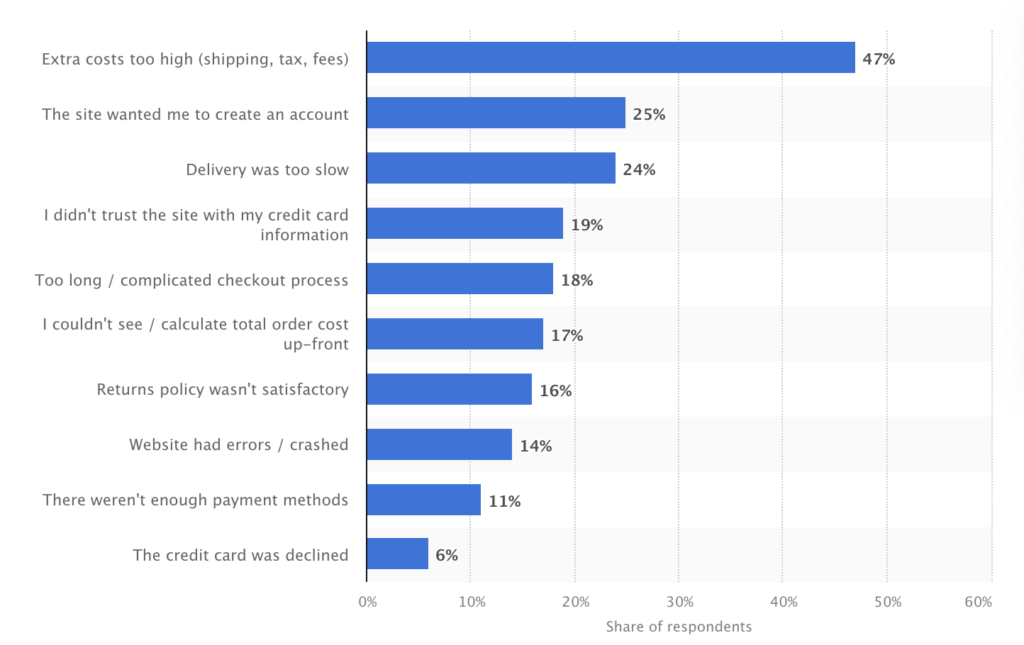
Source.
Add a guest checkout option
According to Statista, 25% of customers abandon their orders because the store requires them to create an account to complete the purchase, adding several time-consuming steps to the process.
A guest checkout option can significantly reduce the friction for first-time customers. Instead of forcing your clients to create an account during the checkout itself, suggest it after the payment is complete, emphasizing the benefits of creating an account at your store.
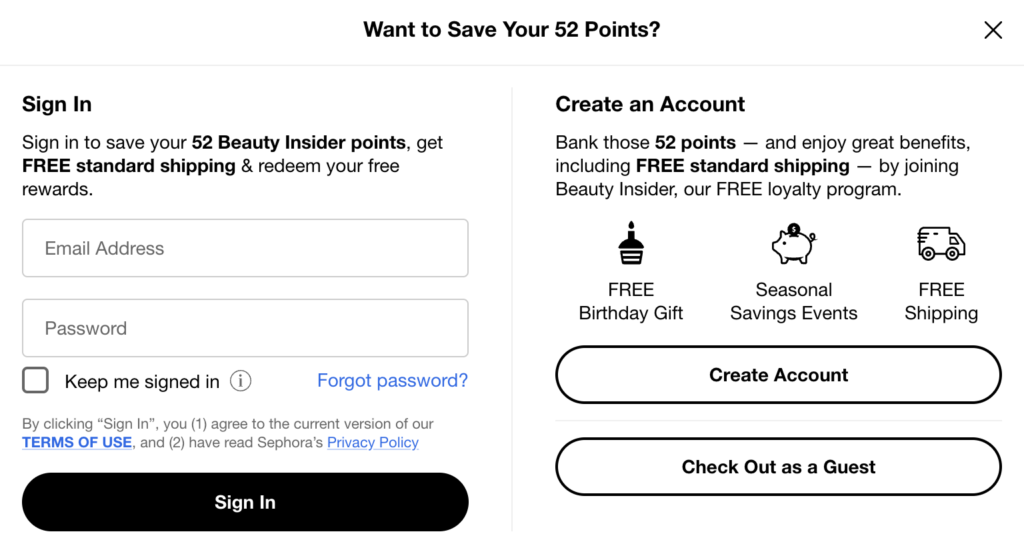
In addition, you can enable customer sign-in through social media or third-party services like Google or AppleID. This will save your clients’ time for manual entry of personal information and provide them immediate access to your web store.
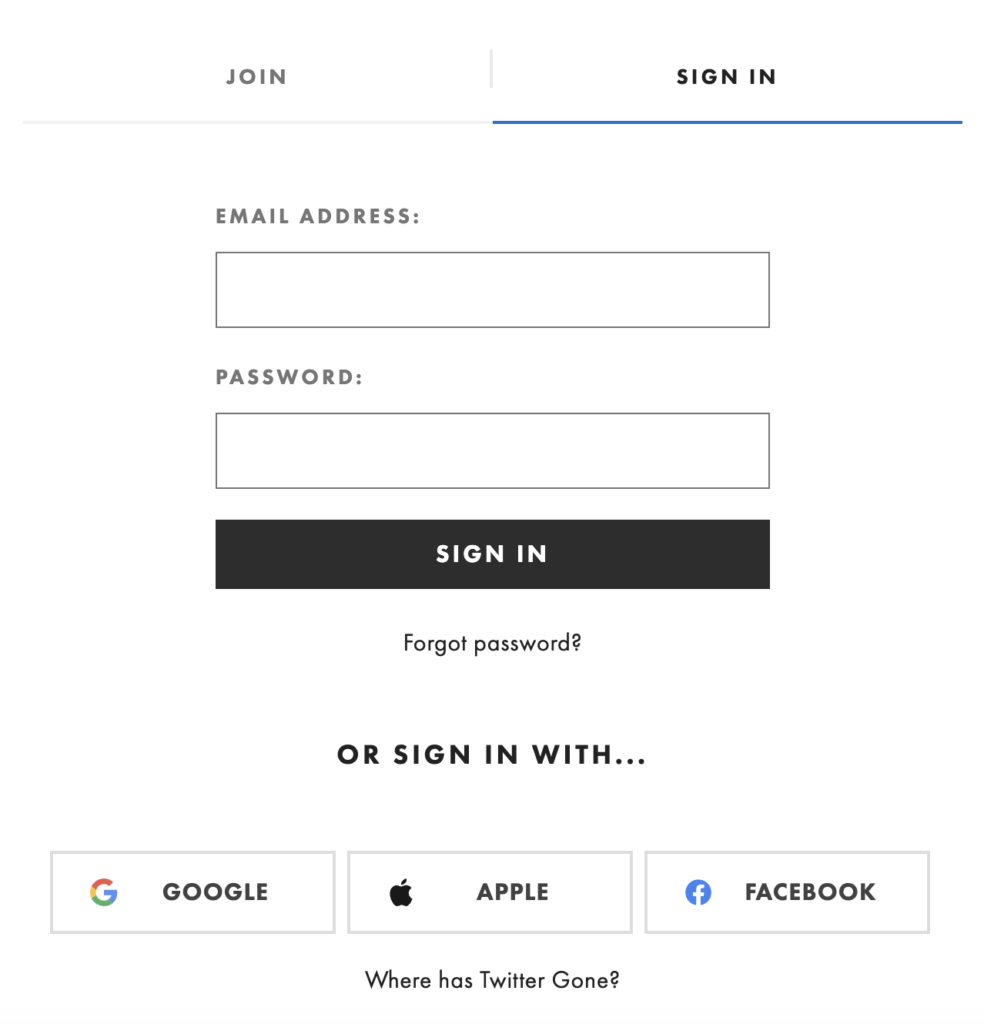
Secure payment processing
One in every five clients terminates the checkout because they can’t trust the store with their credit card info. With a large number of cyberattacks these days, people are less likely to enter their personal, shipment, or billing information if they aren’t sure that it will be kept safe.
First of all, ensure your website uses encryption protocols, like TLS/SSL, to secure data transferred between browsers and servers. Next, you can obtain a security trust badge from a certificate authority like DigiCert or GeoTrust and display it on your checkout page. This way, retailers can indicate that their sites abide by web security rules and that customers’ personal and payment information is safe.

Simplify the checkout procedure
Eighteen percent of your customers abandon their ecommerce carts due to the complex checkout process, according to a previously mentioned Statista report. A convoluted, multi-step checkout process will likely frustrate most customers, making them switch between several tabs to complete a purchase or fill in unnecessary information, including details not directly relevant to the purchase, like marketing surveys. Also, the lack of straightforward navigation can confuse customers about the number of steps needed to complete the purchase.
This is why online retailers need to simplify the checkout process by eliminating unnecessary fields and steps and offering autofill options for information like names or addresses. To better guide customers throughout the checkout, you can visually indicate the step at which they are right now and what stages are left ahead. Finally, you can opt for a one-page checkout so that customers won’t have to switch between a confusing number of tabs.
Add multiple payment methods
Since about 11% of clients terminate the checkout due to the absence of a preferred payment method according to Statista, offering a variety of payment methods is critical for reducing cart abandonment rates. You can survey your customers for their preferred payment methods and even analyze the market for the most popular options and then add them to your website. Some customers may prefer credit cards, while others may prefer digital wallets like PayPal, Apple Pay, or Google Wallet, and by offering a wide range of options, you can cater to the preferences of a broader audience.
In addition, displaying badges of recognizable payment technology providers, like Visa, MasterCard, or PayPal, will indicate the methods of payment your online store accepts and highlight the reliability of your store.

Ensure order transparency
Checkout is when your customers make a final decision about the purchase, so make sure you communicate all order details clearly. You can summarize order information in a separate block enumerating purchased products and costs incurred, including taxes and shipping fees. If possible, display this information throughout the entire checkout procedure.
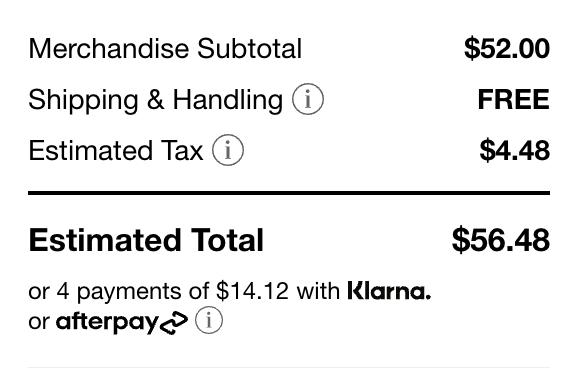
Optimize checkout for mobile
Many consumers use smartphones and tablets to shop online, so overlooking mobile optimization can result in high cart abandonment rates and lost sales. Ensure your website, including the checkout windows, seamlessly adapts to different screen sizes and resolutions. Since mobile screens are smaller, simplify the navigation by ensuring clear and distinct checkout steps with minimal visual distractions and prominent call-to-action buttons.
The checkout process usually includes forms for collecting customer information, so ensure they are mobile-friendly. You can do this by using responsive fields, minimizing the number of required fields, and enabling auto-capitalization and autocorrect to make data entry easier.
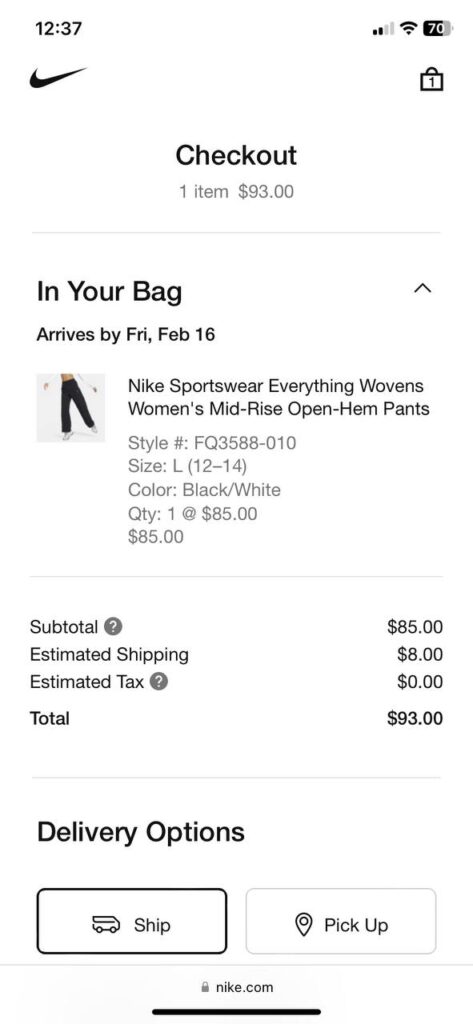
Optimize web store performance
Slow loading of checkout and product pages can lead to customer frustration and abandonment. To make sure customers want to use your web store, maintain its high performance by taking the following measures:
- Perform regular load and stress testing to timely detect and eliminate performance issues before they impact users.
- Optimize web content where feasible by compressing media files and caching.
- If you are using a content management system like WordPress, keep it updated and remove unnecessary extensions that could slow down the website.
- Extract data from Google Analytics and visualize the customer journey to find out which pages cause customers to leave your website.
- Implement security measures to protect your site from threats like DDoS attacks that could affect its performance.
- Set up monitoring tools to continuously track your website’s performance and receive alerts if issues arise.
Conclusion
A poor checkout experience can rob you of a significant percentage of sales, so optimizing the checkout process is vital for the store’s profitability. Companies can improve the checkout flow and significantly reduce cart abandonment rates by offering guest checkout options, ensuring secure payment processing, simplifying the checkout journey, providing a variety of payment methods, and optimizing the website for mobile devices. In the modern competitive ecommerce landscape, paying attention to these details can make a substantial difference in converting casual visitors into loyal customers.
Yan Anderson is the Head of Content Marketing at CS-Cart with over 10 years of experience in the eCommerce industry. He's passionate about explaining complicated things in simple terms. Yan has expertise in building, running and growing eCommerce marketplaces. He loves to educate people about best practices, new technologies, and trends in the global eCommerce industry.

